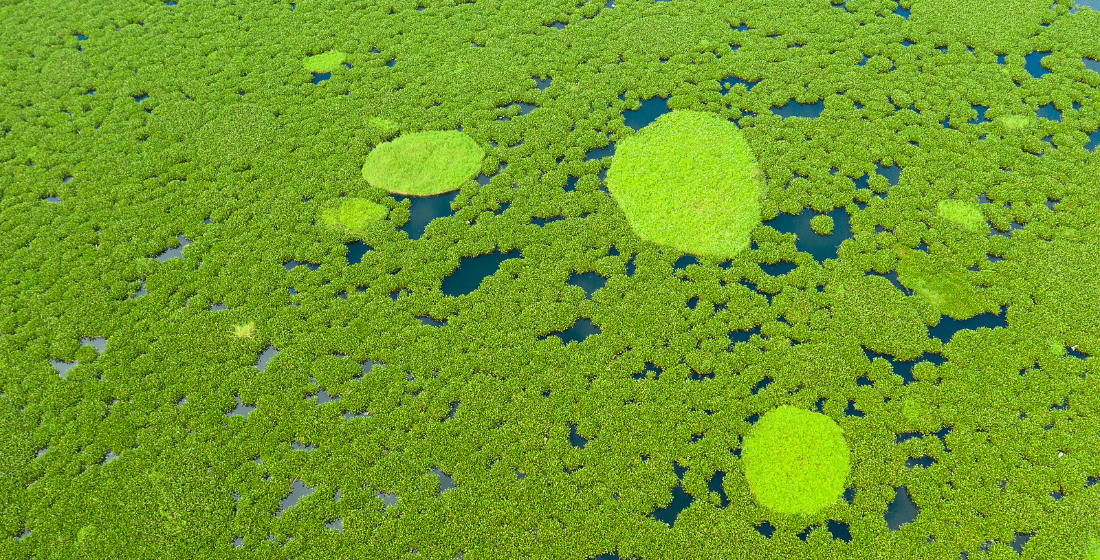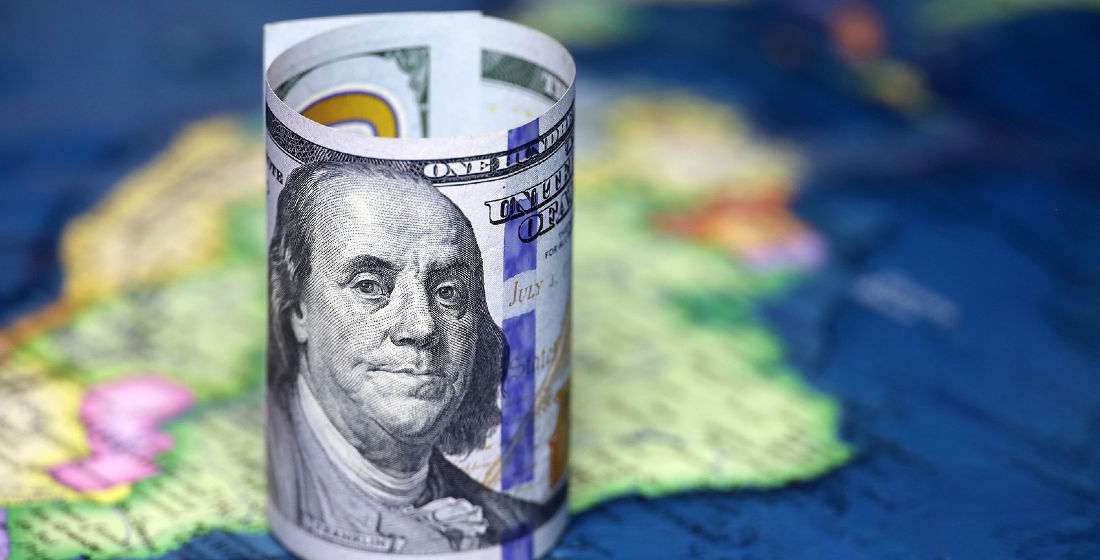Pretty green: Mangroves could be a $12bn climate finance market
A Pakistan-based case study led by the UK’s development finance institution, CDC Group, demonstrated the investment case for a mangrove restoration project next to a wind farm.

Global investment in mangrove regeneration could return $11.8 billion by 2040 if carbon markets were to reflect the true value of nature, according to a new report by environmental finance specialists Earth Security.
The report, Financing the Earth’s Assets: The Case for Mangroves as a Nature-based Climate Solution, outlines the potential of mangrove forests to slow global warming, shield against extreme weather events, help stop the runaway extinction of biodiversity, and support local economies.
Mangroves can store carbon up to 400% faster than land-based tropical rainforests and could unlock 380 million tCO2 of sequestration by 2040. They also provide breeding grounds for marine biodiversity, with 80% of global fish populations dependent on healthy mangrove ecosystems.
“The important step here has been to show the value of mangroves to investment, but also to asset holders – ie predominantly developing countries around the world that can use these nature-based solutions to advance a triple-win of climate, adaptation and biodiversity targets,” says Alejandro Litovsky, Earth Security’s chief executive and founder.
Aligning global finance with mangrove regeneration
Mangrove forests offer coastal cities a protective shield against extreme weather, which can be up to 50-times more cost-effective than a cement wall. In 2017, mangroves prevented $1.5 billion in flood damages in Florida, protecting over half a million people during Hurricane Irma. Damages were 25% lower in the Florida counties where mangroves were present. Despite their potential, mangroves are one of the most threatened ecosystems on the planet and are currently being lost at a rate of 2% per year, faster than coral reefs and all other forest types, including tropical and subtropical forests. Half of all global mangroves forests have already been lost.
The report makes five recommendations to align global finance with the regeneration of mangroves at scale. Among them is a plan to establish a premium price for ‘blue carbon’ in voluntary carbon markets. The current price of carbon credits ($10-15 per tCO2) is not high enough to deliver conservation and regeneration; the price must at least double to $29 per tCO2 for regeneration to be possible at the required scale, and quadrupole to $60 to achieve returns forecast at $11.8 billion ($11 billion of investment for $22.8 billion of revenues in carbon offsets). “The significant value of coastal ecosystems beyond carbon – from storm protection to sustaining commercial fish – should position blue carbon credits to trade at a premium that reflects these values,” says the report.
The report also recommends the creation of the ‘Mangroves 40 Cities Network’ (M40 Cities). Flood-related losses suffered by the world’s 136 largest coastal cities are expected to rise to $52 billion per year by 2050. Creating a network of mangrove forests would act as a global safety net that coordinates the collective action of mayors, shares knowledge on regeneration projects and pathways, and facilitates the aggregation of municipal financing. The 40 cities account for almost 70% of existing mangrove forests, currently storing around 3bn tonnes of CO2.
And another recommendation would see the structuring of the first global municipal bond fund to finance nature-based climate adaptation. The municipal bond (muni-bond) market is one of the most prolific segments of global fixed-income markets, with the US muni-bond market alone valued at $3.8 trillion. A municipal bond fund focused on nature-based climate adaptation could pool different levels of investment risk across developed and emerging markets, allowing for the global scale needed for a product to be viable in global fixed-income markets.
“The next step in our programme is to show how a sovereign and sub-sovereign debt transaction could take these natural assets into account,” adds Litovsky. “There is a growing interest in sovereign bonds and debt-swaps for nature, but investors must understand that these opportunities are not ready off-the-shelf, they require a new level of collaboration between investors, NGOs, foundations and governments, who do not have the protocols for working together or co-designing new systems.”
‘A nature-based climate solution’
In one of the case studies in the report, CDC Group, the UK's development finance institution, asked Earth Security to assess the economic value that the restoration of mangroves by one of their investments – Zephyr Power Limited in Pakistan – could provide to the business as a nature-based climate solution.
Zephyr Power’s 50MW wind project in the Gharo-Keti-Bandar Wind Corridor near Karachi is situated in a region of degraded coastal marshes, which exposes the project’s infrastructure to climate-change risks, particularly coastal erosion and sea-level rise. The analysis identified and quantified three areas of value for the investment: the protection of physical assets, community development and social license to operate, and regulatory requirements by international investors. Overall, the evidence suggested the investment in mangrove restoration would return up to 20 times its value through the protection of physical assets against coastal erosion, saving the project up to $7 million in maintenance costs over the project’s 25-year timeframe, as well as creating a substantial local impact on livelihoods by doubling the incomes of local communities dependent on subsistence farming.
The study provides some hard evidence for DFIs and investors in real assets to embed the value of nature for climate resilience across their investment portfolios. “We worked the fishing communities and we’ve already started to see evidence that the mangroves work; that they're improving fish yields and translating to additional revenues for the fishers,” says Nik Stone, CDC’s ESG manager.
The wind farm is located in an intertidal zone and so the constant ebb and flow has an erosive capacity on hard infrastructure. However, the study revealed that the mangroves protected the infrastructure and it’s access roads from erosion, reducing the maintenance costs.
“What we realised in this project is the importance, particularly in emerging markets, of building partnerships on the ground – it’s really not just about the technical and financial context of a project,” says Stone. “We worked really hard with the sponsor so they could see the benefits, and got them to leverage the ecological expertise of IUCN (International Union for Conservation of Nature) Pakistan. We then reached out to the wider stakeholders in the area to build something that was richer and cognisant of the local context; for example, convincing local herdsmen to stop their animals eating and destroying the mangroves plants.”
A Fund of Funds approach
The UN Climate Change Conference (COP26) in Glasgow later this year will offer a pivotal moment for the discussion of unlocking private financing opportunities and bi-lateral carbon trading agreements. And the report urges governments to use the opportunity to build mangroves into their Nationally Determined Contributions (NDCs) to reap the benefits of climate finance and create cost-effective ways of meeting their climate commitments.
But in order to scale-up capital towards mangroves, Stone believes a Fund of Funds approach will be the most appropriate avenue; with fund managers putting up funds with a nature-based investment thesis to them. “That’s potentially going to be the best source of capital deployment,” he says. “A lot of these projects are individually small, so it’ll be about aggregating them to generate sufficient capital. We’re starting some early engagement with the fund-manager market around this but it’s still early days – particularly as it seems the carbon price needs to increase quite a lot to make it an investable market.”





